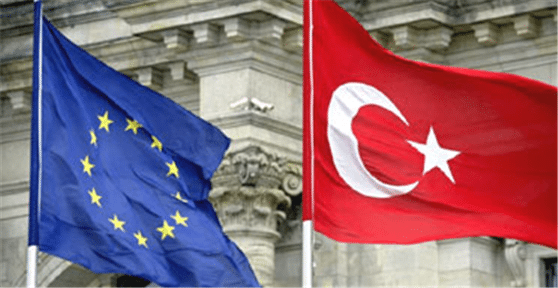According to Wednesday’s data, GDP per capita in Turkey increased to 48 percent of the EU average (100) in 2010.
Data released by Eurostat, the EU’s official statistics office, on Wednesday showing the gross domestic product (GDP) per capita in 27 member countries and the six non-EU members found Turkey overtook the union’s Romania and Bulgaria in 2010, challenging the “too big and too poor” argument used by parties opposed to Turkey’s acceptance into the union.
 The Eurostat figures cover the 27 member states, three European Free Trade Association (EFTA) countries, four candidate countries and three Western Balkan countries. GDP per capita expressed in purchasing power standards (PPS) in the member countries varied from 43 percent of the EU 27 average in the poorest member country Bulgaria to 283 percent of the average in the richest Luxembourg.
The Eurostat figures cover the 27 member states, three European Free Trade Association (EFTA) countries, four candidate countries and three Western Balkan countries. GDP per capita expressed in purchasing power standards (PPS) in the member countries varied from 43 percent of the EU 27 average in the poorest member country Bulgaria to 283 percent of the average in the richest Luxembourg.
According to Wednesday’s data, GDP per capita in Turkey increased to 48 percent of the EU average (100) in 2010, up from 44 percent in 2008, leaving two of the members, Bulgaria and Romania, who had 43 and 45 percent, respectively, behind. Turkey’s economy grew by 8.9 percent in 2010 over the preceding year, faster than the EU average, marking a strong comeback from the 2009 global credit crunch.
If Turkey is accepted into the EU today, it would have a higher GDP per capita than Bulgaria, Romania, Latvia, Poland and Lithuania when these countries first entered the union. Bulgaria and Romania’s GDP per capita remained at 37 and 38 percent of the EU average when they entered the bloc in 2007. Latvia, Poland and Lithuania had 41 and 47 percent, respectively, when they became EU members in 2004.
Observers argue these figures are proof that Turkey’s economic growth cannot be an excuse for entry into the EU. Another critical fact is that countries like Latvia and Lithuania, which are currently only slightly above Turkey, with 52 and 58 percent of the EU’s average GDP per capita, are expected to see a relatively slower economic growth in the following five years.
Latvia’s economy contracted by 0.3 percent last year over 2009 while Lithuania suffered a stagnation of 1.3 percent in the same period. Comparing these two performances to Turkey’s 8.9 percent growth in the given period along with estimations for an average annual growth of 5 percent during the next five years, Turkey is likely to climb up the ladder and leave these two countries behind on the GDP per capita list.
The EU began accession talks with Turkey in 2005 but they have proceeded slowly, held up by the slow pace of reforms as well as opposition from France and Germany. Skepticism about the EU has risen in Turkey, where some people feel the 27-state bloc is unfairly hindering the majority Muslim but secular nation’s membership bid.
What opponents of Turkey’s accession complain most about is that its population is too poor and too big (at 73 million today and 80 million by 2015). If calculated in terms of purchasing power parity, Turkey is among the world’s top 16 economies, with a 2010 GDP of $735.8 billion. The country aspires to become one of the 10 largest economies by the year 2023.
Cihan news agency

Leave a Reply